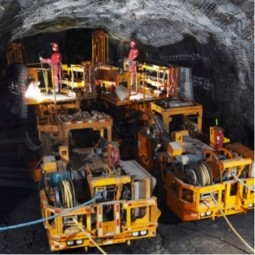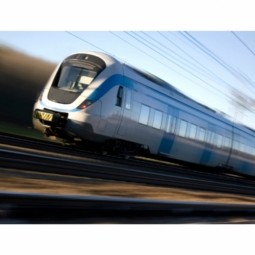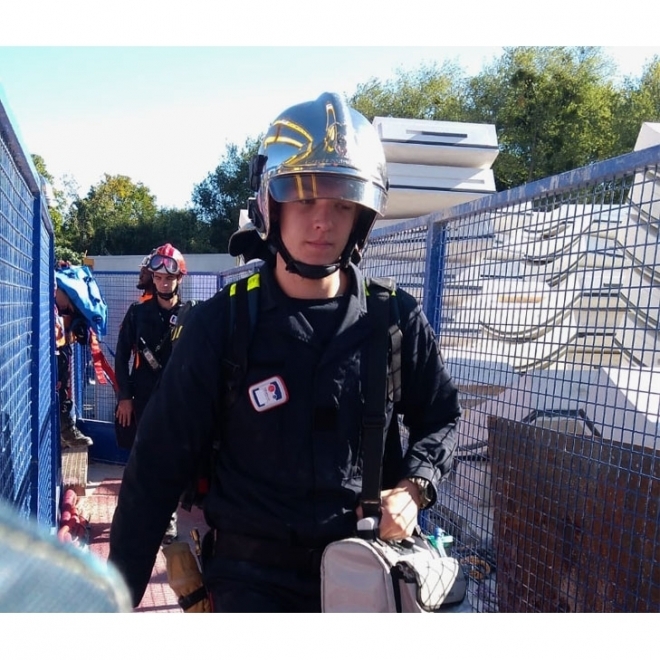Overview
.png) |
Real-Time Location System (RTLS) |
Applicable Industries
Applicable Functions
Case Studies
Market Size
|
The RTLS market is expected to grow from USD 3.19 billion in 2018 to USD 8.79 billion by 2023, at a CAGR of 22.5% between 2018 and 2023. Source: marketsandmarkets |
Business Viewpoint
|
What are the business applications of RTLS? - Fleet tracking: Fleet-tracking RTLS systems make it possible for an enterprise to track vehicle location and speed, optimize routes, schedule jobs, aid navigation and analyze driver efficiency. - Navigation: The most basic navigation services provide directions for how to get from Point A to Point B. Incorporating GPS, mapping and mobile cellular technology will enable more complex navigation services. - Inventory and asset tracking: RFID technologies are widely used for asset and inventory tracking. RFID tags communicate wirelessly with RFID readers throughout the enterprise. - Personnel tracking: systems that track field workers are typically GPS-enabled mobile phones. On-site personnel tracking systems often use RFID technology, such as RFID-enabled badges. - Network security: Wi-Fi Protected Access (WPA) can limit the physical area from which a user can connect to restrict access based on the user's location. Why is important RTLS in your business? - Reduce search time for misplaced assets: RTLS allows users to view the precise location of assets and eliminate time-consuming manual searches and audits. - Reduce equipment movement: real-time enterprise visibility minimizes the need for equipment relocation. - Improve audits and recover lost property: with real-time, online auditing of assets, workers can locate equipment quickly. If equipment leaves a defined area, RTLS automatically triggers an alert. - Inventory and warehouse management: automate inventory control, pick and put-away location, shipping lane verification, and data entry tasks, while providing opportunities for faster time-to-delivery and elevated customer service. - Inbound and outbound logistics: track the most demanding, variable warehouse and operations assets as they move throughout a facility, yard, or industrial complex. The result is higher efficiency of physical storage areas and equipment. - Transportation Management: plan and control inbound and outbound truck, car, rail, and vessel movement with constraint validation, sequencing tools, and stowage validation. - Capture disparate data: ERP systems integrated with middleware that read any set of auto-ID technologies (RTLS, bar code, RFID, etc.), can quickly capture events, filter, and map disparate data. - Improve cycle time: track items and personnel, in detail, as they move through zones and processes. - Create return on investment opportunities: timely knowledge of asset movements helps expedite tasks and transactions, enabling accurate forecasting and improving asset value while reducing the order-to-cash cycle. - Improve safety and security: RTLS enables low latency alarms, it extends asset visibility out to 1,750 meters (far beyond the abilities of passive RFID) and the optimal RTLS platform integrates hardware and software with existing BI and ERP solutions to help enterprises align their strategies cross-functionally.
|
Stakeholder Viewpoint
|
Facility Managers: Facility managers benefit from RTLS by gaining real-time insights into asset location and movement within their facilities. This enables them to optimize space utilization, streamline workflows, and identify opportunities for process improvement. Operations Managers: Operations managers rely on RTLS data to optimize resource allocation, monitor workflow efficiency, and identify bottlenecks in production or logistics processes. Real-time visibility into asset location allows them to make data-driven decisions and respond quickly to changing operational conditions. |
Technology Viewpoint
|
What are the most common technologies currently used in RTLS? GPS: offers strong solutions when objects are on the move outside. However, much of the asset movement is conducted indoors, rendering GPS nearly useless. RFID: passive RFID solutions which use tags and barcodes only work within a very short range with expensive readers, making them ineffective for active tracking purposes. UWB: the technology uses high-bandwidth radio communications which offer the best-in-class location accuracy (up to 10 cm), but is also the most expensive one. WiFi: in WiFi-based RTLS, the tag actually has a WiFi radio in it that transfers data out to multiple access points throughout a building or area. This technology may be a good fit if the needed accuracy does not go below 5-6 meters. Bluetooth: due to the widespread adaptation of the Bluetooth standard, BLE (Bluetooth Low-Energy) beacons are therefore cheaper and easier to integrate into other systems and everyday devices than alternative solutions and provides the flexibility required to adapt the solutions to every part of the business’ operations.
|
Data Viewpoint
|
How the location data is received with RTLS? With RTLS technology, location data is received from devices (location transmitters) attached to ceilings or walls and transmitted via Wi-Fi through active asset tags for equipment and wearables for people (tags, badges). The location data is then accessed in a variety of ways including via cloud-based application program interfaces (API), mobile apps, integrated CRM software, etc.
|
Deployment Challenges
|
Hardware Installation: Deploying RTLS requires installing sensors, antennas, and tags in strategic locations throughout the facility or environment. These hardware components capture location data and transmit it to the RTLS software platform for processing and analysis. Software Integration: Integrating RTLS software with existing enterprise systems, such as asset management software or ERP systems, enables seamless data exchange and interoperability. This integration ensures that RTLS data is accessible to stakeholders and can be used to support decision-making processes. |





